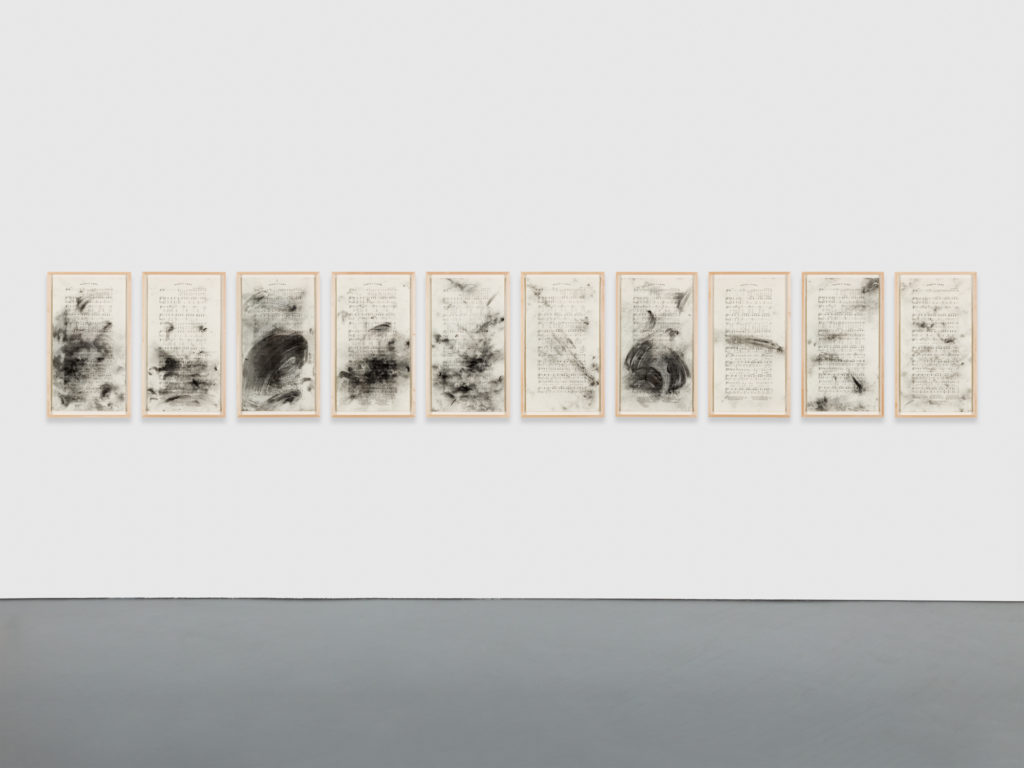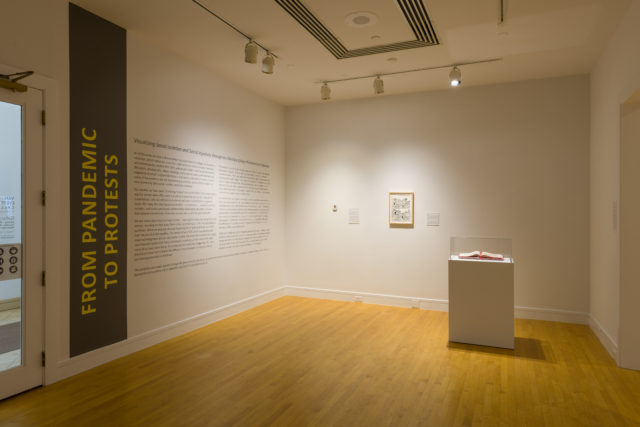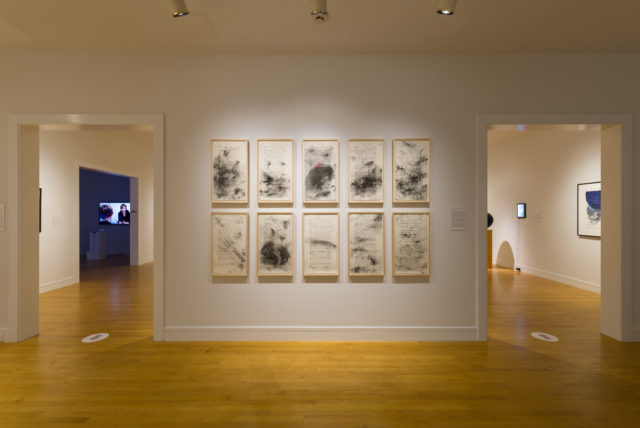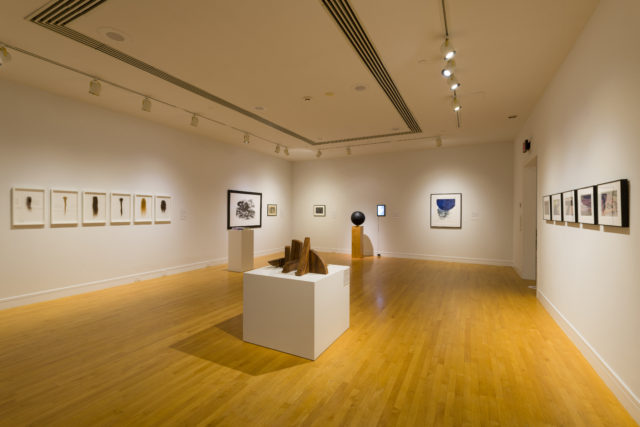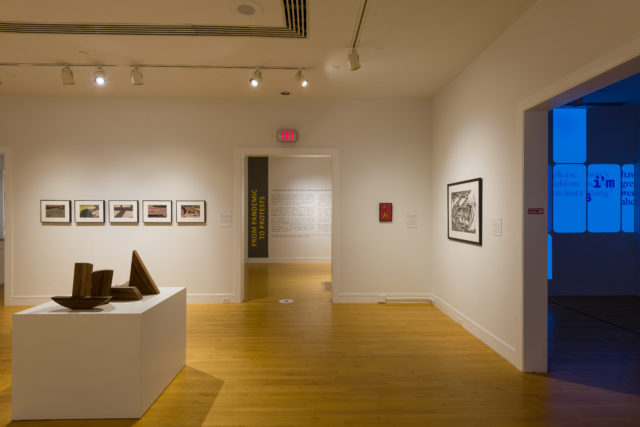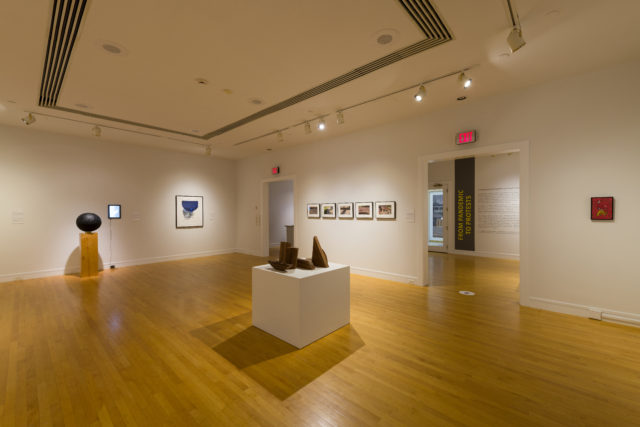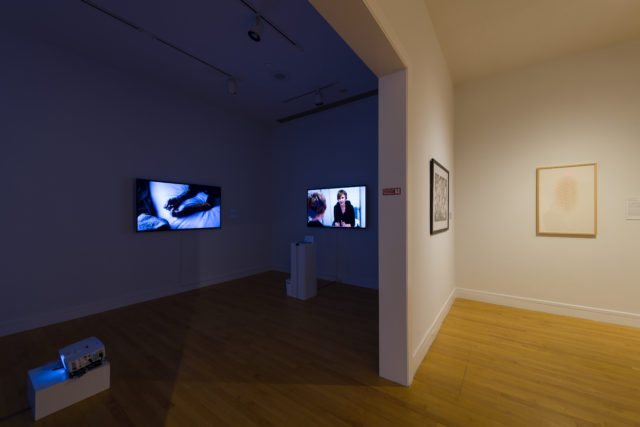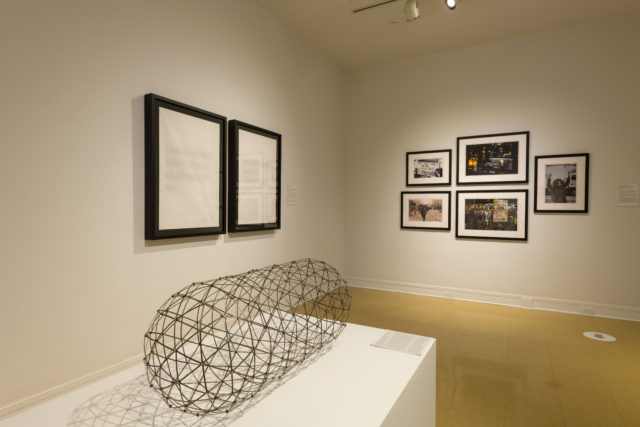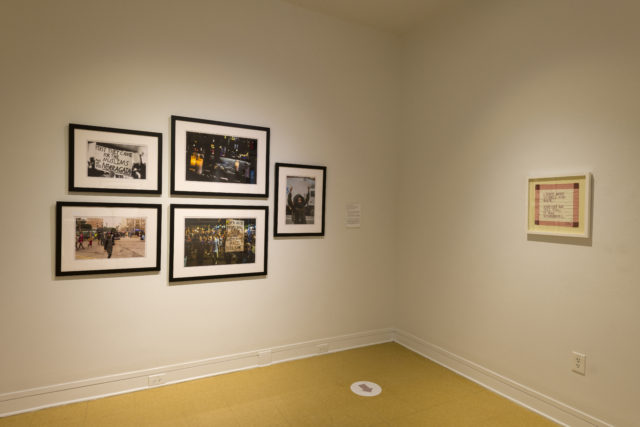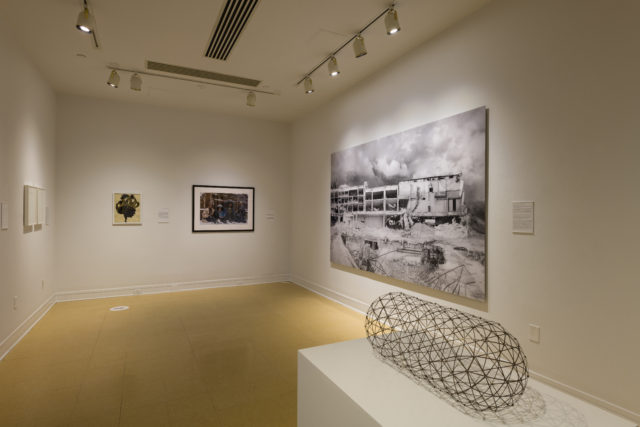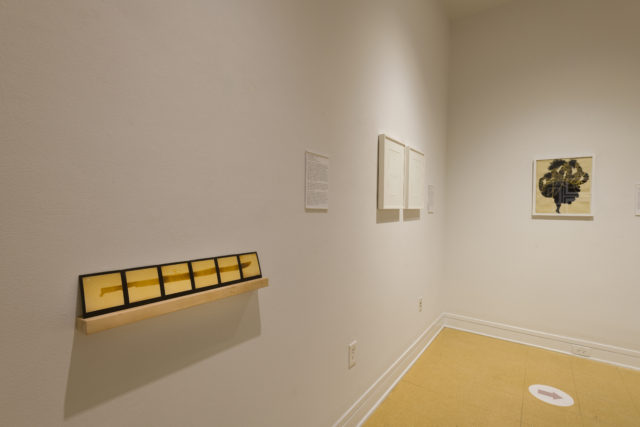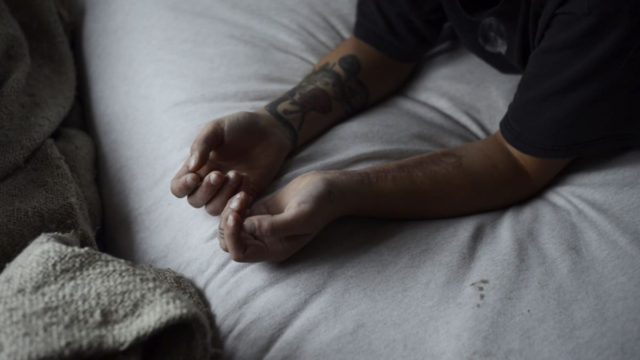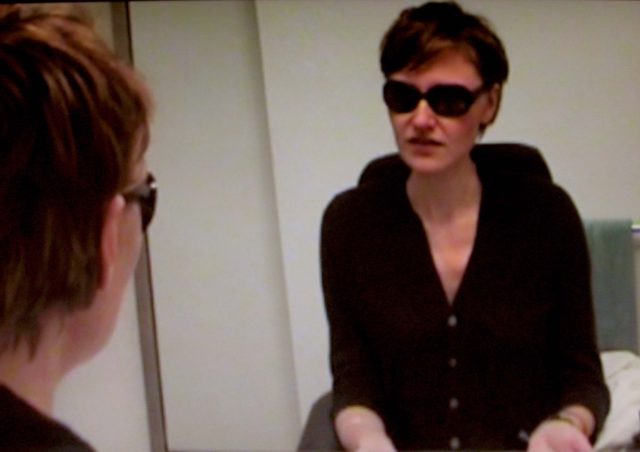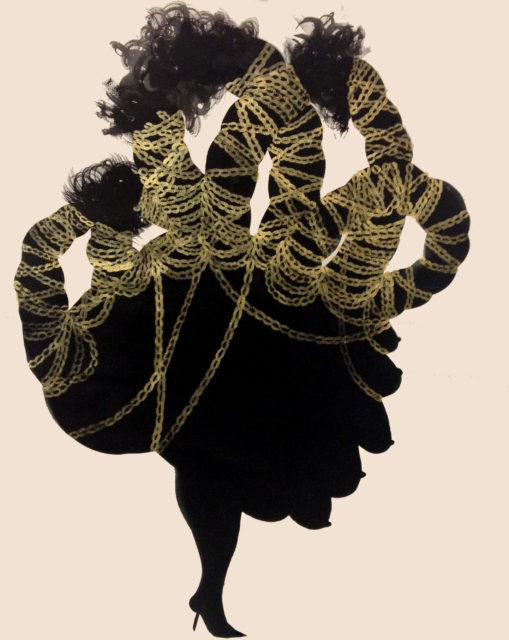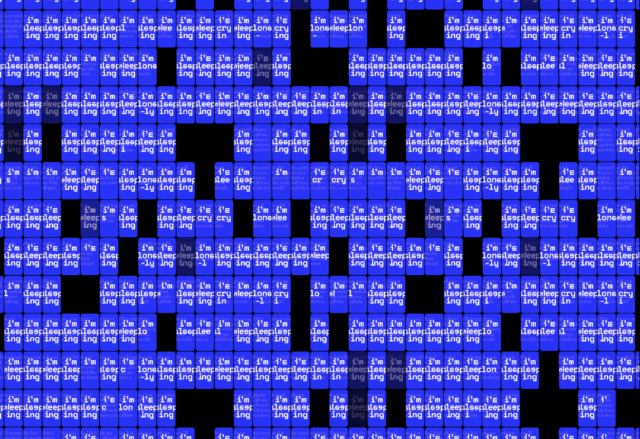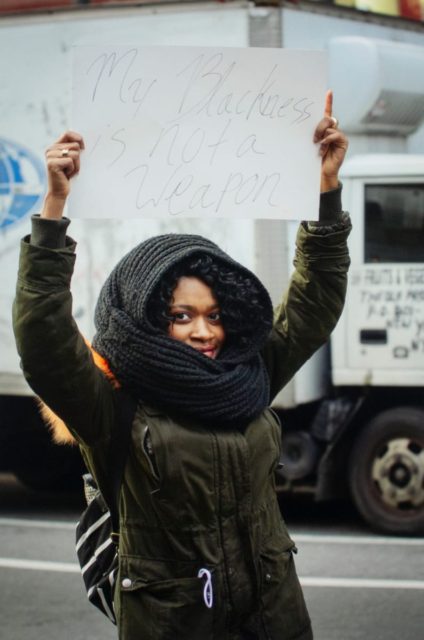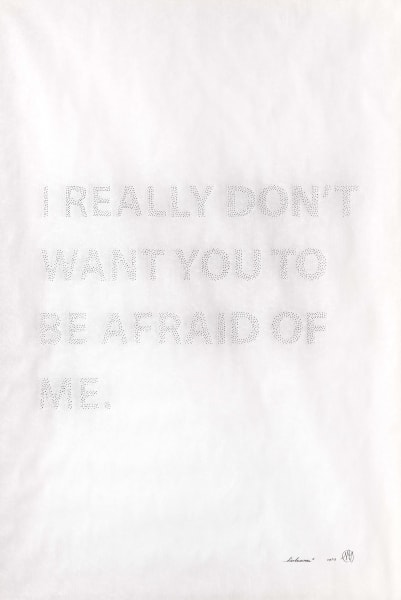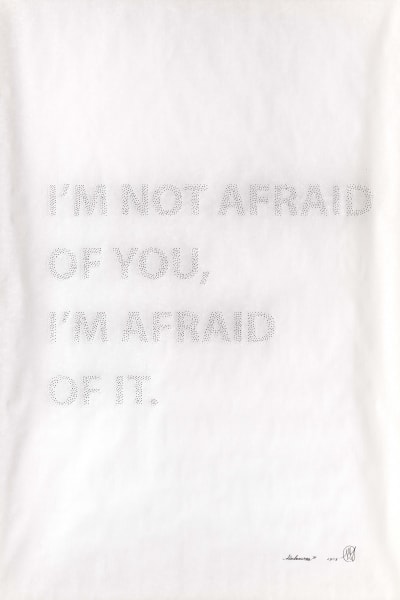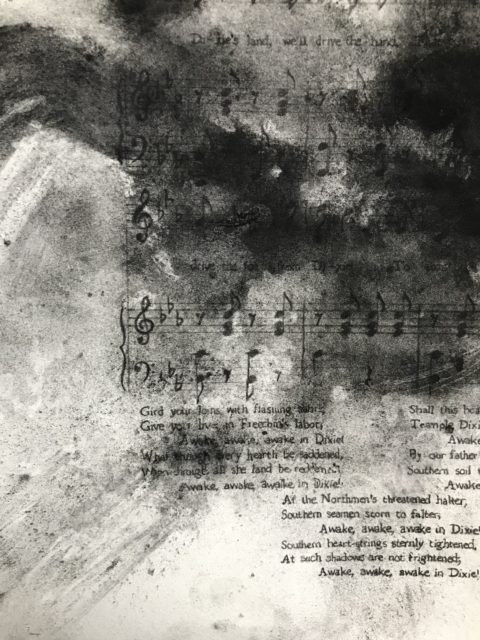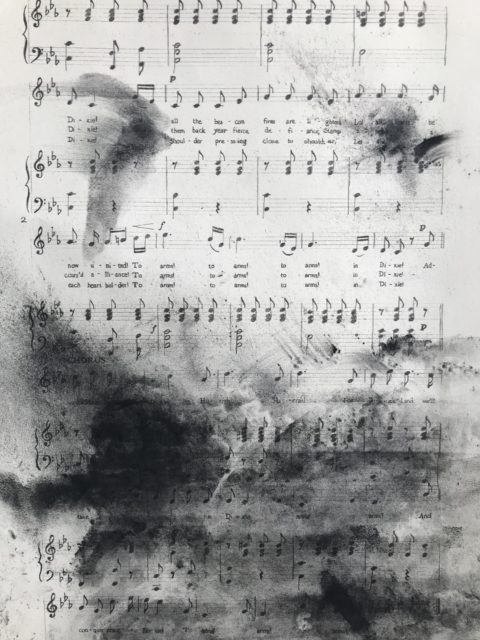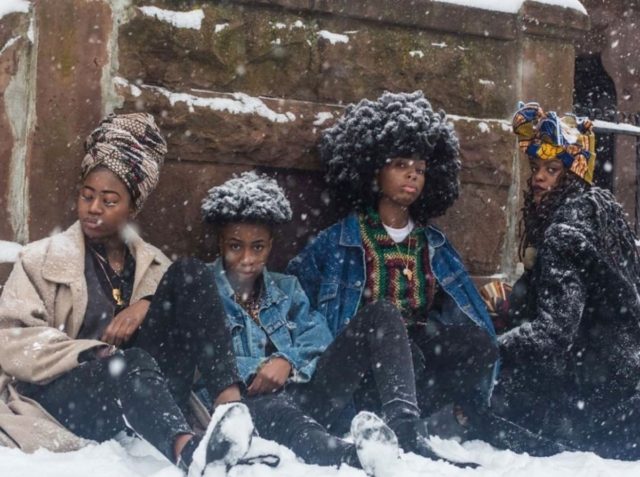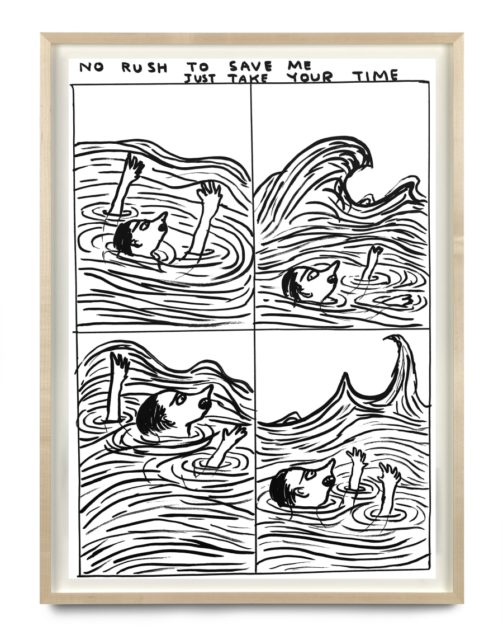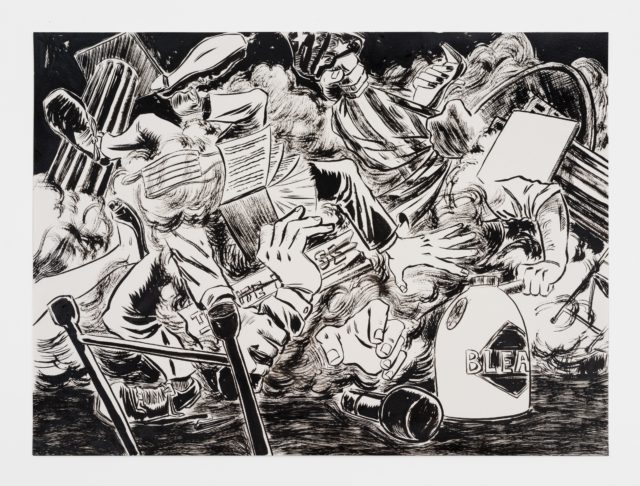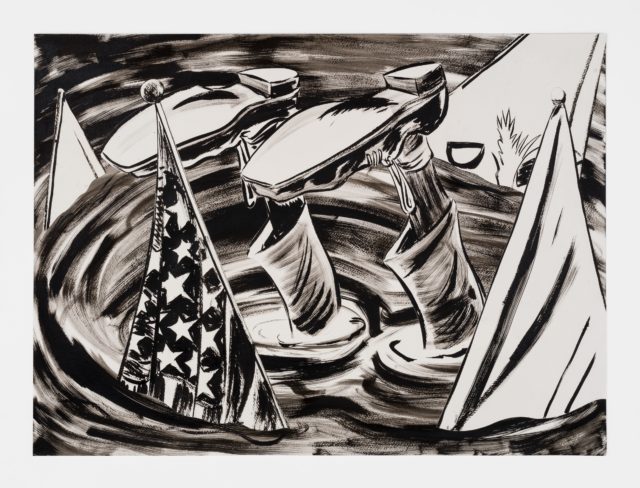Visualizing Social Isolation and Social Injustices through the Davidson College Art Collection
From Pandemic to Protests
Van Every / Smith Galleries
On View: August 20, 2020— October 18, 2020
Related Programs & Events
In Conversation: Shan Kelley, Mikael Owunna, and Kat Singh
September 2, 2020, 5:00 pm—6:00 pm
https://youtu.be/XwDqAt_CQDM
In Conversation: Shoshanna Weinberger and Anthony Goicolea
September 22, 2020, 11:00 am—12:00 pm
In Conversation: Bethany Collins and Hilary Green
October 1, 2020, 5:00 pm—6:00 pm
AT THIS TIME, THE GALLERIES ARE ONLY OPEN TO THE CAMPUS COMMUNITY. STAY TUNED FOR ADDITIONAL INFORMATION.
All of the works on view in this exhibition are drawn from college’s permanent art collection, which comprises more than 4,000 works in a variety of media. Selections are contemporary, created after 1970, with several made in just the last few months. The prints, photographs, videos, drawings, and sculptures were assembled because, regardless of artists’ original intentions or conceptions, the works visualize or evoke some of the emotions we are. experiencing as we head into the 2020 election – a time marred by both social isolation and social injustices.
For months, we have been “sheltering in place” due to the COVID-19 pandemic. March was the month when office work and school moved into our homes, nonessential travel halted, cultural institutions shuttered, and brunch with friends relocated to Zoom. For many, this time has also ushered in – or reinforced – a sense of precarity, isolation, and anxiety previously unfathomable, bolstered by abundant unknowns, from disease transmission, immunity, and vaccines to job furloughs and layoffs.
We are slowly adjusting to our new normal – wearing face masks, following directional arrows, standing six feet away from others, and talking to clerks through Plexiglas partitions. While we practice physical distancing from friends and family, and affirm that “we are all in this together,” the reality is that COVID-19 has disproportionately impacted indigenous groups and people of color. The economic shutdown has brought new financial burdens for many individuals, revealing just how close to the edge many of us have been living. As unemployment reached a staggering 15%, more Americans have had to make the difficult choice between buying groceries or purchasing prescription medicine.
The pandemic has coincided with tragic news events that are forcing a reckoning with the systemic inequities and bias that have long shaped our culture – particularly incidents of racial violence and police brutality toward African-American people killed for being black “while jogging,” “while sleeping,” and other non-threatening verbs. The recent murders of George Floyd, Ahmaud Arbery, Rayshard Brooks, Breonna Taylor, and others have led to calls for historic change, including divesting from police departments and investing in mental health, education, and other services, with a focus on supporting communities of color.
As this exhibition came together, the Black Lives Matter movement was back with a force, even internationally, with unprecedented daily protests in major cities and small suburban communities alike. NASCAR banned the Confederate flag, and monuments that honored slave traders, colonists, and Confederate generals have been removed, not just in the US but around the world. While we have been here before, it seems that some real change may be afoot, particularly in regard to policing and mass incarceration, and broadly around racism and inequality. Despite the challenges and the difficult work that will be required, it’s hard not to add “hopeful” to the list of descriptors of this unprecedented time.
Artists are exceptionally good at recognizing, documenting, and illuminating concerns of the past and the present, as well as imagining new futures. The works on view here, though sometimes recalling trauma or violence, may help us consider or reconsider the events that brought us to this moment. It is our hope that dialogue with these artworks can lead to healing, growth, and ultimately, a path forward.
Exhibiting Artists:
Chris Beeston | Louise Bourgeois | Bethany Collins | William Cordova | Olivia Crumm | Jim Dine | McArthur Freeman | Regina Jose Galindo | Mark Thomas Gibson | Anthony Goicolea | Ann Hamilton | Michael Heizer | Alvin C. Jacobs | Shan Kelley | Jeana Eve Klein | An-My Lê | Glenn Ligon |Park McArthur | Mikael Owunna | Paul Pfeiffer | Cort Savage | Cecelia Scott-Fitts | David Shrigley | Katyayani Singh | Pamela Phatsimo Sunstrum | Kara Walker | Shoshanna Weinberger | Carey Young
Learn more about the artists and works in the exhibition here.
Featured Image Details: Bethany Collins, Dixie’s Land (1859-2001), 2020, Charcoal, toner and graphite on paper, 10-part installation, 14″ x 26″ each, Commissioned by Davidson College, with funds from the Justice, Equality, and Community Grant. Photo Courtesy of the Artist and PATRON Gallery, Chicago.

